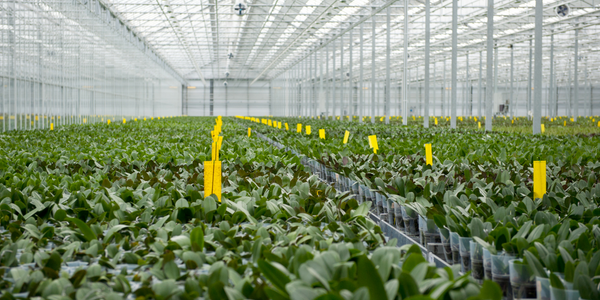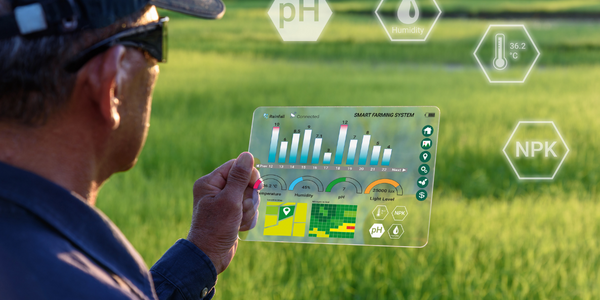Download PDF
Real-Time Visibility Mitigates Port Congestion for Leading Chemical Distributor
Technology Category
- Analytics & Modeling - Machine Learning
- Sensors - Chemical Sensors
Applicable Industries
- Agriculture
- Mining
Applicable Functions
- Logistics & Transportation
Use Cases
- Last Mile Delivery
- Port Automation
Services
- Data Science Services
The Challenge
The company, a leading chemical distributor with a presence in over 11 countries, faced significant challenges due to the pandemic-driven port congestion that affected global trade. With over 200 international shipments per month, ensuring timely delivery was a top priority. However, the port congestion disrupted over 51% of the company’s shipments. The prolonged port delays impacted the production cycles of the company’s suppliers, especially in the far East, North America, and Europe, compromising delivery schedules across regions. The company also struggled with a capacity crunch as vessels queued outside ports and turnaround times increased. Securing cargo space became challenging due to lack of visibility over space availability and changes in lead times. Additionally, communication gaps arose as keeping stakeholders informed about changes in arrival timings, delays in transshipments, etc., became increasingly difficult due to a lack of reliable information on port delays and inefficiencies in tracking updates.
About The Customer
The customer is a specialist chemical distributor established in the 1980s. The company is renowned for its market expertise in facilitating the supply of chemical solutions from manufacturers to industrial consumers worldwide. With a robust presence in over 11 countries and a portfolio of 3000+ products, the company serves all major markets, including agriculture, rubber, cosmetics, lubricants, mining, and more. It is one of the leading brands in the chemical distribution space, handling over 200 international shipments per month.
The Solution
The company sought a solution that could provide visibility into port delays and optimize their shipment planning. GoComet’s GoTrack Automated Shipment Tracking module provided the solution. With proprietary machine learning algorithms, GoComet’s Port Delay smart tool calculated delays at major ports across the globe and automatically notified the company of uncertainties affecting their shipments. The company also gained real-time cargo tracking capabilities, receiving live updates on the exact location and movement of shipments via advanced track and trace technology. This allowed the company to address potential bottlenecks and optimize shipment planning. The platform also provided predictive updates on delays and ETAs based on on-ground developments and data analytics, equipping the logistics team with actionable insights. The carrier service reports generated by the platform helped them identify the most reliable service providers. Furthermore, the GoComet platform shared live tracking updates with the company’s stakeholders for their specific orders, enhancing the customer experience.
Operational Impact
Related Case Studies.

Case Study
Intelligent Farming with ThingWorx Analytics
Z Farms was facing three challenges: costly irrigation systems with water as a limited resource, narrow optimal ranges of soil moisture for growth with difficult maintenance and farm operators could not simply turn on irrigation systems like a faucet.

Case Study
Greenhouse Intelligent Monitoring and Control Solution
Farming Orchids is the most successful form of precision farming in Taiwan, and also the most exported flower. Orchids need a specific temperature and humidity conditions to grow and bloom, and its flowering time may not be in line with market demands, so the price collapses when there is overproduction. Therefore, some farmers began to import automated greenhouse control systems for breeding and forcing, which not only improves quality, but also effectively controls the production period and yield to ensure revenue. In 2012, an orchid farmer built a Forcing Greenhouse of about 200 pings (approximately 661 Square Meters) in Tainan, Taiwan. The system integrator adopted Advantech’s APAX-5000 series programmable automation controllers to build the control platform, coupled with Advantech WebAccess HMI/SCADA software, to achieve cloud monitoring. The staff of the orchid field can monitor important data anytime via smart phone, iPad, and other handheld devices, and control the growth and flowering conditions. System requirements: In the past, most environmental control systems of orchid greenhouses in Taiwan used PLCs (Programmable Logic Controller) with poorscalability and control, and could not be connected to the Internet formonitoring from the cloud. For advanced database analysis and networking capability, the PC platform must be adopted. Therefore, PAC Systems (Programmable Automation Controller) with both PLC programming capabilities andPC functions is a better choice.The environmental control of the Orchid greenhouse switches on and off devices like fan, shade net, cooling/heat pump, liquid flow control, water-cooling wall etc. It is controlled by a control panel of electric controllers, and is driven by a motor, to adjust the greenhouse temperature, humidity, and other environmental conditions to the set parameters.

Case Study
Enabling Internet of Things Innovation in Agriculture
DigiBale, wanted to apply technology know-how and IP from implementations successfully to more agriculture sectors including cotton, forestry, sugarcane and cattle. However, farmers and growers still have worries about the connected technology.

Case Study
Precision beekeeping with wireless temperature monitoring
Honeybees are insects of large economic value and provide a vital service to agriculture by pollinating a variety of crops. In addition, bees provide us with valuable products such as honey, beeswax, propolis, bee venom, etc. Monitoring of honeybee colony health, population, productivity, and environmental conditions affecting the colony health have always been exceedingly difficult tasks in apiculture. Research has shown that even small deviations (by more than 2°C) from the optimal temperatures have a significant influence on the development of the brood and the health of adult bees.







